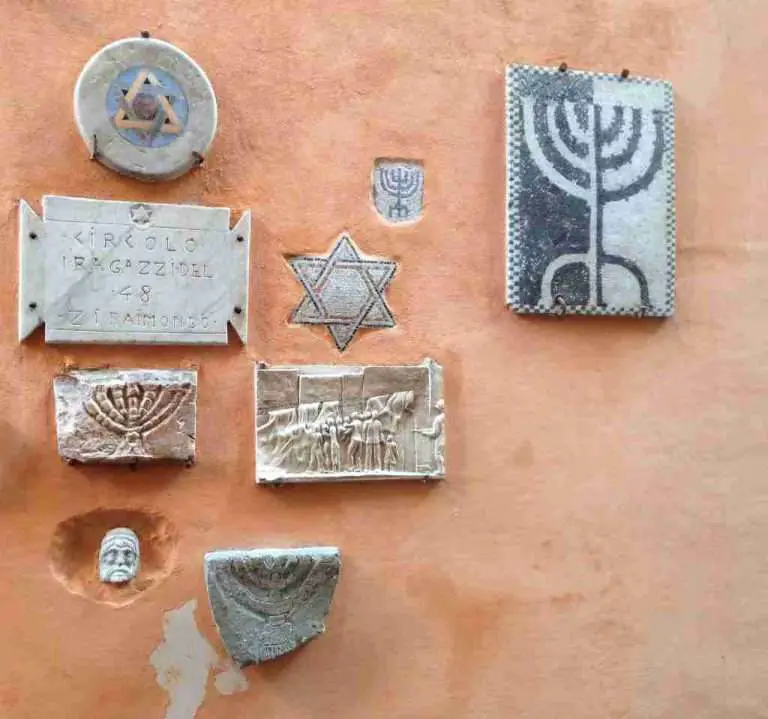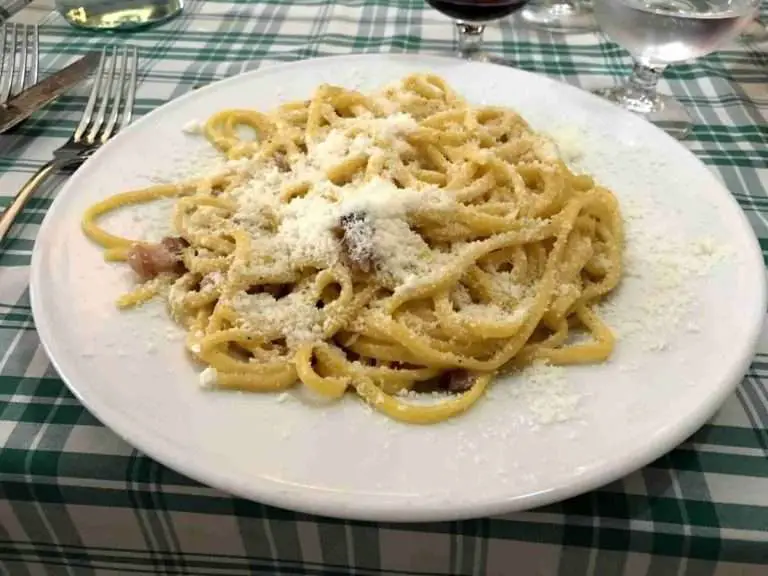
Tourists often overlook Italy’s modern and contemporary art museums, preferring instead to examine the country’s ancient and Renaissance-era treasures. But Italy hosts many museums, galleries, sculpture parks, and other spaces and events dedicated to art from the 19th, 20th, and 21st centuries.
From Klee to Kounellis, Picasso to Kapoor, and Modigliani to Marini, the museums and galleries mentioned here are some of the best places in the world to learn more about contemporary Italian and international art and artists. They are also important centers that put Italian artistic movements, such as Futurism and Arte Povera, into context.
Rome and Lazio


In 2009, Rome opened the MAXXI, its first museum dedicated to the art of the 21st century. The “XXI” in the name is 21 in Roman numerals.
The Zaha Hadid-designed building in the Flaminio neighborhood is a huge space that is capable of featuring large scale works and installations, but also photography, textiles, and sculptures. Some of the artists represented here are Alighiero Boetti, Anselm Kiefer, Kara Walker, Anish Kapoor, William Kentridge, Mario Merz, Gerhard Richter, and Yayoi Kusama.
Before the MAXXI, Rome had the National Gallery of Modern Art. This museum is housed in a late 19th-century building near the Villa Borghese and features art from Pirandello, De Chirico, Modligliani, Kandinsky, and more. This museum was renovated and reorganized in 2016, a move that was both applauded and criticized.

Another place in Rome to see modern art is the Palazzo delle Esposizioni, located in a palatial neoclassical building on the Via Nazionale. Here you will find many blockbuster exhibitions by contemporary artists or on modern topics, from recent history to technology. By the way, it has a great bookstore (on the street level) and cafe (upstairs).
Related to this space is the group PalaExpo, which curates collections and organizes exhibitions at other spaces in Rome. Included under the umbrella is the MACRO, Rome’s municipal contemporary art museum, which is housed in the former Peroni Beer factory in the Nomentana neighborhood. It features “some of the most significant expressions characterizing the Italian art scene since the 1960s,” including many works inspired by Rome or created by Rome-based artists.
PalaExpo also runs the Mattatoio, the ex-slaughterhouse turned art space in the Testaccio neighborhood that has long been the place to be for Rome’s cool kids. The Roma Quadriennale is an art event held every four years and organized by PalaExpo.
Further, there is the Auditorium Parco della Musica, a music hall and occasional exhibition space in Roma Nord. It was designed by the celebrated architect Renzo Piano and opened in 2002.
Closer to town is the Giorgio de Chirico House-Museum near Piazza di Spagna, which features paintings, sketches, and sculptures from the artist.
Elsewhere in Rome’s region of Lazio, check out the town of Anticoli Corrado, located about 40 km northeast of the capital and featuring a trove of artist studios and the Civic Gallery of Modern Art.
Milan

Modern art is synonymous with Milan, Italy’s fashionable and forward-thinking capital. So there are several museums and galleries here devoted to contemporary art.
The Galleria d’Arte Moderna (GAM) is Milan’s largest exhibition space for 19th-century art. It is housed in the Villa Belgiojoso, a three-story palace once belonging to Napoleon III, and contains works from Italian artists such as Modigliani, Segantini, and Boccioni as well as paintings by Gauguin, Cézanne, Picasso, Van Gogh, and Manet.
Milan’s museum of 20th-century art is the Museo del Novecento, which is home to Giuseppe Pellizza da Volpedo’s famous Lo Quarto Stato (The Fourth Estate) and one of Lombardy’s most revered contemporary works from a local artist. This work is among the collection that the museum considers its 10 masterpieces, which includes a few Boccioni, a couple of Modigliani, and art from Vasilij Kandinskij, Paul Klee, Piet Mondrian, and Piero Marussig. Yet another masterpiece at the Museo del Novecento is its enviable view of the Milano Duomo.
Then there’s the Fondazione Prada. First organized in 1995 by Miuccia Prada and Patrizio Bertelli to put on various exhibitions of contemporary art around Italy and the world, the Fondazione Prada opened its permanent museum in Milan in 2015 at Largo Isarco.
The permanent collection at Fondazione Prada includes, for example, the light work of Dan Flavin in the Chiesa Rossa and the Atlas project with works by Jeff Koons and Damien Hirst. Fondazione Prada also runs the Osservatorio, a photography exhibition space in the Galleria Vittorio Emanuele II, and another art outpost in Venice at the Ca’ Corner della Regina.
A cool piece of public art in Milan is Il Dito, an upturned middle finger next to the stock exchange. Milan’s Middle Finger is a famous, thought-provoking sculpture by Maurizio Catellan, one of Italy’s most famous artists still working today.
Venice

Venice is on this list for the Peggy Guggenheim Collection. Located in Peggy Guggenheim’s former palazzo on the Grand Canal, the museum “is the most important museum in Italy for European and American art of the first half of the 20th century.”
What does that include? Some of the famous names in Mrs. Guggenheim’s collection include Braque, Duchamp, Mondrian, and Giacometti. Ernst, Pollock, and Magritte. Calder, Brancusi, Klee, and Picasso. Just about anyone you can think of from the world of contemporary art is there. The Guggenheim also attracts numerous big-name exhibits.
Of course, Venice also is the host city for the Biennale, an arts extravaganza that takes place every two years.
Despite its name, this celebration of all genres of contemporary art is happening almost all of the time. The Biennale of Art happens every two years on odd-numbered years, while the Biennale of Architecture takes place bi-annually on even-numbered years. “Biennales” for music, theater, and dance take place annually and Venice also hosts the world-renowned Venice Film Festival each year, also known as the Biennale of Cinema.
Florence and Tuscany

Finding modern art in Renaissance-heavy Tuscany feels a bit like looking for a needle in a haystack. But modern art is here in abundance if you know where to look.
Florence
In Florence, consider the Strozzina Centro di Cultura Contemporanea (CCC). The Strozzina, located at the Palazzo Strozzi, puts on exhibitions and events related to contemporary art and culture from around the world.
The Museo del Novecento Florence is the Tuscan capital’s museum of Italian art from the 20th and 21st centuries. Featured here are works by Giorgio Morandi, Giorgio De Chirico, and many others.
Florence also has the Marino Marini Museum, which features the works of Italian artist Marino Marini, known for his sculptures of horses.
Also, what could be more modern than fashion? Even if you can’t afford to shop until you drop, you can enjoy looking back – and forward – at the styles created by Florentine Salvatore Ferragamo in the Museo Ferragamo.
Tuscany
There are several more opportunities in Tuscany to enjoy modern art. Just north of Florence, in the city of Prato, is the Luigi Pecci Contemporary Art Museum. It features mid to late-20th-century art from the likes of Andy Warhol, Sol LeWitt, Anish Kapoor, and Jannis Kounellis.
If you’re in Pisa, you can savor some pop art with Keith Haring’s Tuttomondo mural. It’s one of the last works ever created by the American artist.
Two more outdoor modern art spaces in Tuscany are gardens.
In Chianti, check out the Chianti Sculpture Park. Integrated with nature in the Chianti woodlands 10km north of Siena, the sculpture park features works from artists from 20 countries.
Il Giardino dei Tarocchi, the Tarot Garden, is an unusual project of sculptures based on tarot cards by artist Niki de Saint Phalle. The Tarot Garden is located in Capalbio in the province of Grosseto.
Turin (Torino)


The spire of the Mole Antonelliana gives Turin its distinctive look. The Mole also houses Italy’s Museo Nazionale del Cinema (National Museum of Cinema).
The moving image is, to some, the ultimate in contemporary art, and the MNC contains the “archeology of cinema,” a vast collection of archival film footage, books, and magazines about film, scripts, costumes, and a cinema.
Among the masterpieces in the collection are cameras and movie projectors dating as far back as 1840; Peter O’Toole’s costume from Lawrence of Arabia; an original poster from the Rita Hayworth classic Gilda; storyboards from Star Wars; and a script of the Italian dialogues from the 1933 version of King Kong.
While Venice has the Biennale, Torino has the Torino Triennale Tremusei, a triennial exhibition of emerging artists at three of Torino’s contemporary art spaces: the Fondazione Sandretto Re Rebaudengo, the Castello di Rivoli, and the Galleria Civica d’Arte Moderna e Contemporanea, also known as the GAM.
Another place for modern art, just down from the Mole, is CAMERA. As you can tell by the name, CAMERA is Turin’s museum dedicated to Italian and international photography.
Naples

Art springs from alleyways and sides of buildings in Naples thanks to creative street artists, including renowned ones like Banksy and Jorit. Visitors to Napoli need only take a street art walking tour or head underground to see the ancient city’s decorative metro stations to get a dose of the new. Or they can head to one of Naples’ many contemporary galleries.
The best-known of Naples’s modern museums is the MADRE, which stands for Museo d’Arte Contemporanea Donna Regina. Housed in a 13th-century former monastery, the MADRE features works by Andy Warhol, Cindy Sherman, Anish Kapoor, Emilio Isgrò, Alighiero Boetti, Marina Abramovic, and Jan Fabre, among many, many others.
Conclusion
This is just a fraction of some of the modern and contemporary art spaces throughout Italy. But these museums and parks are definitely worth a visit, especially if you need a break from ancient ruins and religious art.
Last updated on July 5th, 2023Post first published on March 15, 2021






